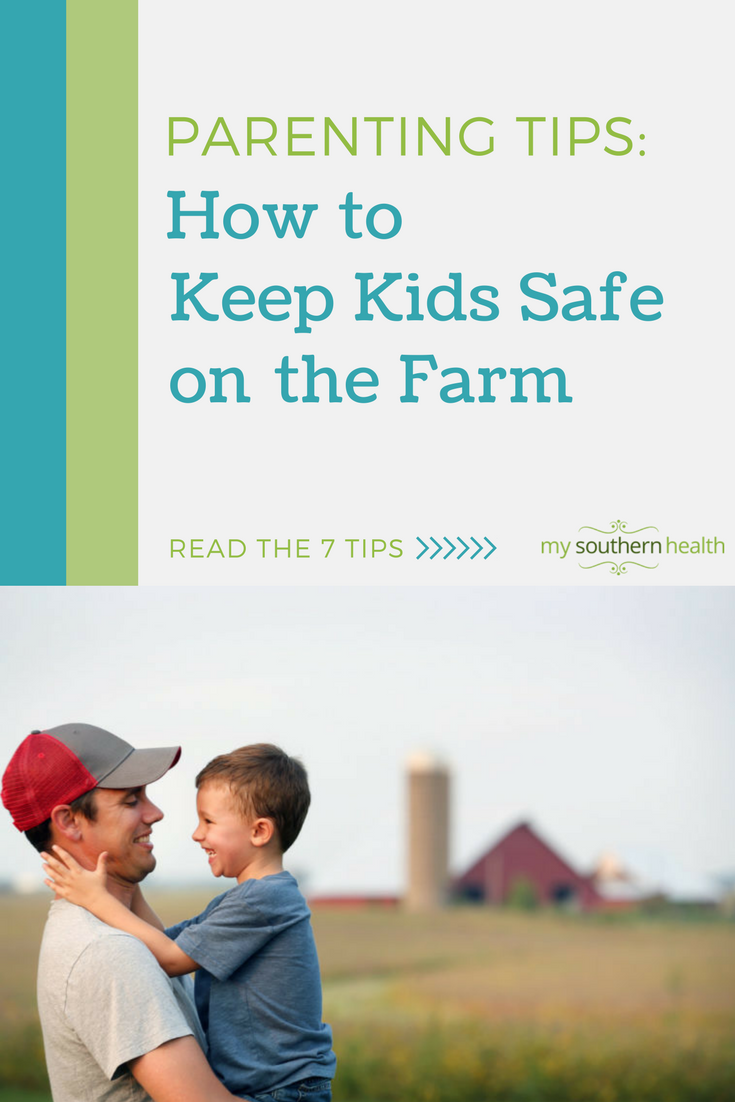Farms are rich environments for children to learn and grow. Here’s how to encourage farm safety for kids.
Farms can be wonderful places for children, where independence and responsibility are fostered and family relationships are strengthened. The farm environment provides children with valuable and unique experiences that enable them to develop both socially and physically, even though they are in an isolated setting. However, farms are also workplaces and evidence shows that this places children at greater risk of injury when playing or helping out around the farm. That’s why it’s so important to promote farm safety for kids.
Childhood farm injuries and fatalities most often occur while children are playing in an agricultural worksite, or are bystanders to agricultural work. Children younger than 10 experience one of the highest rates of pediatric farm-related injury, according to a study by the National Institute for Occupational Safety and Health.
Ideally, non-working children should be physically separated from the occupational and environmental hazards associated with agricultural worksites. Safe play areas are an alternative to bringing children into the worksite, especially when offsite childcare is not available.
How can we increase farm safety for children?
It may be helpful to use the S-A-F-E approach to address child safety on the farm:
- S – See the hazards. Conduct a safety walk to identify them.
- A – Assess the risk of injury and consider how old children are, and how long and how often they are exposed to risks.
- F – Fix the problems by using a variety of control measures.
- E – Evaluate and record your actions. Some people will have more control over implementing safety measures than others, but everyone can help in some way.
The leading cause of fatal injury on farms is incidents involving farm machinery. Injuries can be caused by tractors and other machinery, but also chemicals, pesticides and large animals. Children may be at greater risk for agricultural injuries because it is difficult to provide constant supervision on a farm. Children who live on farms may engage in work that is inappropriate for their age and developmental level.
What farm safety rules can I use to keep my child safe?
- Do not allow your child to wander alone on the farm. Create a fenced-in “safe play area” for your child to play in or near the house and away from work activities.
- Assign age-appropriate tasks to your child if they are physically able to take part in farm work, ensuring they are properly trained and supervised at all times.
- Follow manufacturers’ recommendations for age restrictions when operating machinery and equipment.
- Always turn off farm equipment, lower hydraulics, encourage tractor safety and remove keys when equipment is not in use.
- Teach your child and visitors on the farm that farm animals are not domestic pets.
- Never carry your child while operating tractors, ATVs and other farm equipment or allow them to be in the equipment storage area, livestock barns or grain bins.
- Keep your child away from objects and equipment they can climb, including windmills, electrical wires, augers, elevators and grain wagons.
The good news is that you, as a parent or caregiver, can play a major role in preventing injuries on farms. Remember, use every opportunity you can to talk with your child on how to be safe and stay safe. Most injuries are both predictable and preventable.
This post was written by Emily Riley, an injury prevention program manager for Be in the Zone at Monroe Carell Jr. Children’s Hospital. Riley has a background in adolescent health and development, and when not working, she enjoys running, cooking/baking, being outdoors, exploring local coffee shops and spending time with the people she loves. She also has a hard time putting down a good book.


